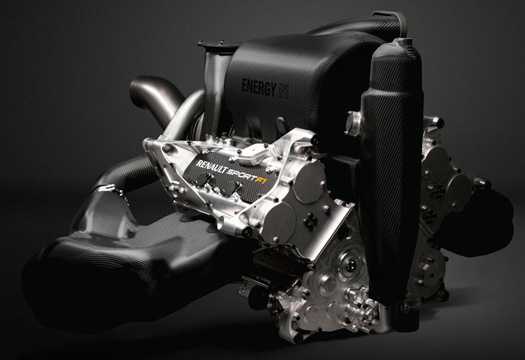Formula 1 and the insane turbo V6
Formula 1 is the craziest of sports. Not because of the insane speeds on the track, but because of what happens with the rules from year to year. Over the years there have been a number of drastic changes. No refueling. No changing tires. Removal of traction control. The big news this year is the switch in engines. The 2.4 liter V8 is gone, replaced with the 1.6 liter V6 turbo. What does 1.6 liters bring you in the F1 world? 600 horsepower. Or, in another manner of measure, over 6 horsepower per cubic inch.
The power figures are really just the tip of the iceberg. There is so much technology packed into this package. The system will also have the aid of the new KERS replacement, which will add an extra 160 electric horsepower. It also contains my favorite bit, the MGU-H. Under power, the MGU-H absorbs power off the shaft of the turbo and sends it to the MGU-k, which can then apply that power to the drivetrain. But the real magic happens when you slow down. The sand in the Vaseline for turbo motors is turbo lag. The new system avoids that by having the MGU-H turn into a motor, keeping the turbo spinning at optimum levels, so when the driver accelerates again there is no lag waiting for the turbo to spin back up.
There is a lot more craziness to be found in the new systems and Jalopnik has a nice rundown of the Renault package. We are now less than two months away from the season opener in Melbourne. It looks like it is going to be a very interesting 2014 in Formula 1.
Formula E Championship
Racing, in general, has largely ignored the electric vehicle. You will, on occasion, see something about a really fast drag car that is all electric. And there is the e-bike race at Isle Of Man. For most of your big racing organizations though, it’s less than an afterthought. The one place that has at least dabbled in EV technology is F1. With the KERS systems, they are doing vast amounts of research that is actually paying dividends. A look at the latest supercars from Ferrari, Porsche, and McLaren is testament to that.
That idea is now being expanded into a full fledged racing series, with many of the big F1 players on board. It’s called Formula E, and it has some pretty grand plans. The inaugural season will start in the fall of 2014 with ten teams using the car you see above, the Spark-Renault SRT-01E. Renault will be in charge of integrating everything, with McLaren supplying the powertrain and electronics and Williams supplying the batteries.
Plans for the initial season call for each team to have two drivers and four cars. The extra cars are not there for replacement in the event of a crash though. Instead, each race will require two mandatory pit-stops where the drivers will switch cars, the electric equivalent of a fuel stop. Also interesting is that the cars will not have full power (200kw / 270bhp). That will be available in practice and qualifying, but for the race the cars will be limited to power saving mode (133kw / 180bhp), with full power available as a push-to-pass option for a limited number of uses.
Races will be contested all around the globe, run on street tracks in Los Angeles, Miami, London, Berlin, Monte Carlo, Beijing, Hong Kong, Putra Jaya, Punta Del Este, and Buenos Aires. Also interesting, all races will be run on the same all-weather Michelin tires. The lack of slicks should make for some exciting racing.
Initially all of the cars will be essentially the same, with the long term goal being that the various manufacturer teams will innovate and progress the technology. All of this, or course, while raising awareness of the electric car as a viable option in real-world situations. It remains to be seen how successful any of this will be, but Formula E is certainly off to an interesting start.


